High School Students
The Quantum Foundry offers short courses for high school students in grades 9, 10, 11, and 12 during the Fall and Winter Sessions. Each session lasts five weeks and will meet on Saturdays on the UCSB campus. Short courses are designed to be active learning experiences for high school students to engage with the fundamentals of Quantum Foundry related principles and research. The short courses are taught by Foundry Ambassadors in collaboration with faculty.
Foundry Ambassadors, young UCSB scientists, and engineers are engaged in doctoral research and want to share their enthusiasm for science, and their expertise in quantum research, with high school students. Immediately following the class meetings on Saturdays, Ambassadors and participants will engage in further conversation over lunch.
In addition to the excitement of learning concepts involved in current science and engineering research, high school participants gain access to the university setting and to scientist and engineer role models. The Quantum Foundry also places motivated students from various local and regional schools in direct contact with each other, allowing relationships to develop based on a mutual interest in the sciences.
Teachers
Please contact Wendy Ibsen if you are interested in attending a session or bringing large groups of students from your campus.
Contact
Wendy Ibsen
Education Coordinator
2025-2026 Session Dates
Fall 2025 - September 20, 27, and October 4, 2025
Winter Session: January 24, 31 & February 7, 2026
Applications
Application Opens: Friday, August 29
Application Due: Friday, September 12
Courses:
Fall 2025
Cloudy with a Chance of Luminous Meatballs
Why do fireflies glow in the dark? Why can deep-sea anglerfish light up the ocean? The answer is bioluminescence—a process powered by quantum mechanics! In fact, every source of light—whether from a firefly, a laser pointer, or the screen you’re reading this on—comes from the quantum interactions of electrons and photons. When electrons shift between energy levels inside atoms and materials, they release tiny packets of light called photons. You can imagine each photon as a “luminous meatball” raining down from the cloud of quantum interactions. In this course, we’ll uncover how these invisible quantum rules give rise to very visible technologies. We’ll start with light-emitting diodes (LEDs)—where electrons in semiconductors make light. We’ll then expand to superluminescent diodes (SLDs), which combine quantum randomness with engineering designs for brighter, narrower light sources. Finally, we’ll dive into the ultimate quantum light source: the laser, where photons march in perfect steps through stimulated emission. Through lectures, simulations, and hands-on activities with Arduinos and optical demos, you’ll explore how the abstract world of quantum mechanics leads directly to the devices that light our homes, connect our internet, and probe the mysteries of the universe. By the end, you’ll see how the field of photonics—engineering light-matter interactions on the nanoscale—rests on the rules of the quantum world.
Taught by: Roark Chao and Justin Tan, Ph.D. students in Electrical & Computer Engineering
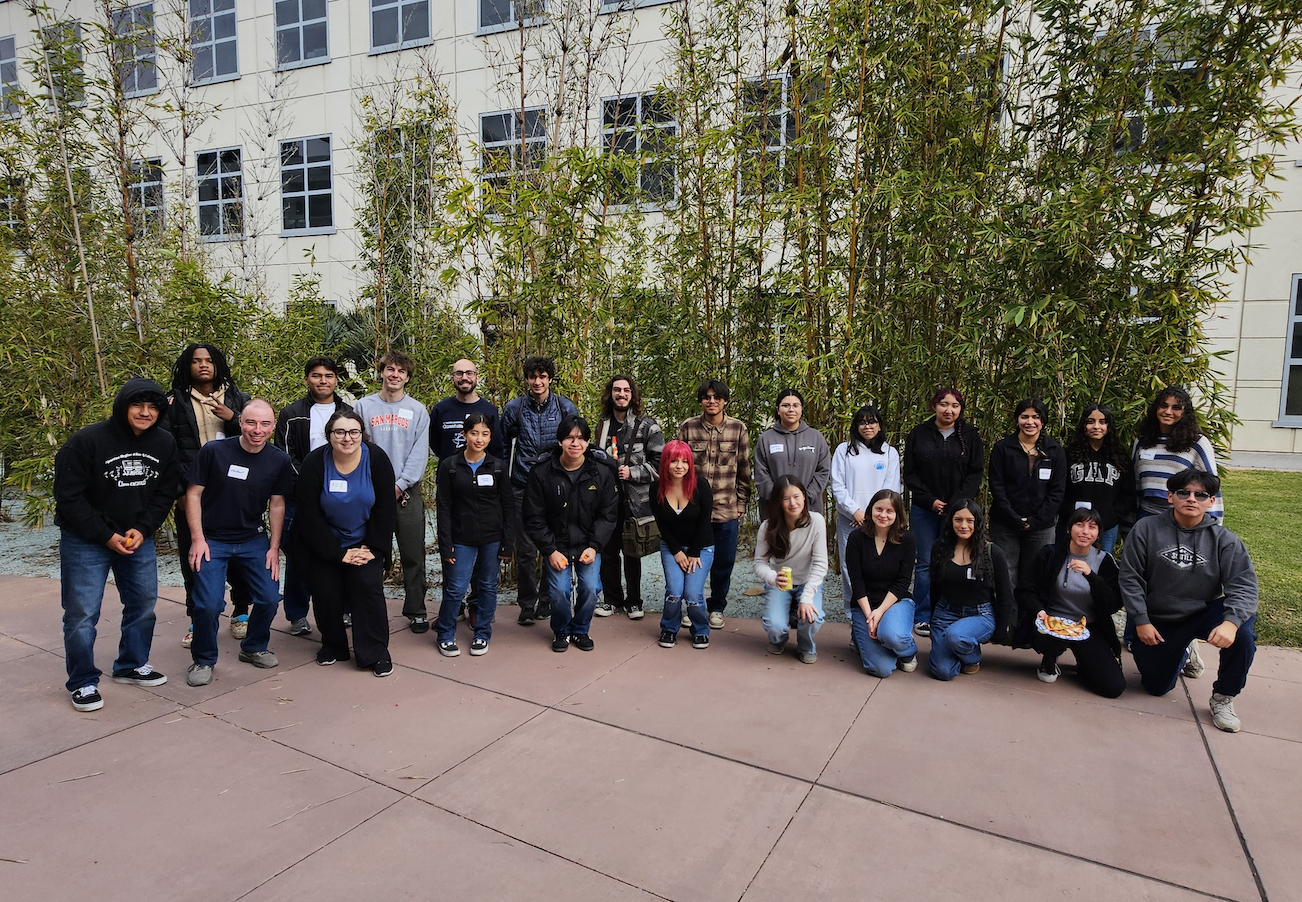
Winter 2025
The Physics of Music
How does a microphone work, and what is dissonance actually? Behind the scenes, music is brought to life by the physics of sound waves. Throughout this course, we will talk about the interplay between physics and music, like how instruments are made and the cool algorithms used in sound design. The course will include a mix of lectures and hands-on experiments. We’ll also look at the reverse: how music benefits our understanding of physics. Whether it’s the sonification of data or the visualizing the wave-like nature of quantum mechanics, nature harmonizes in cool and unexpected ways!
Taught by: Alex Giovannone, Kathlynn Simotas, and Michael Arena, Ph.D. students in Physics
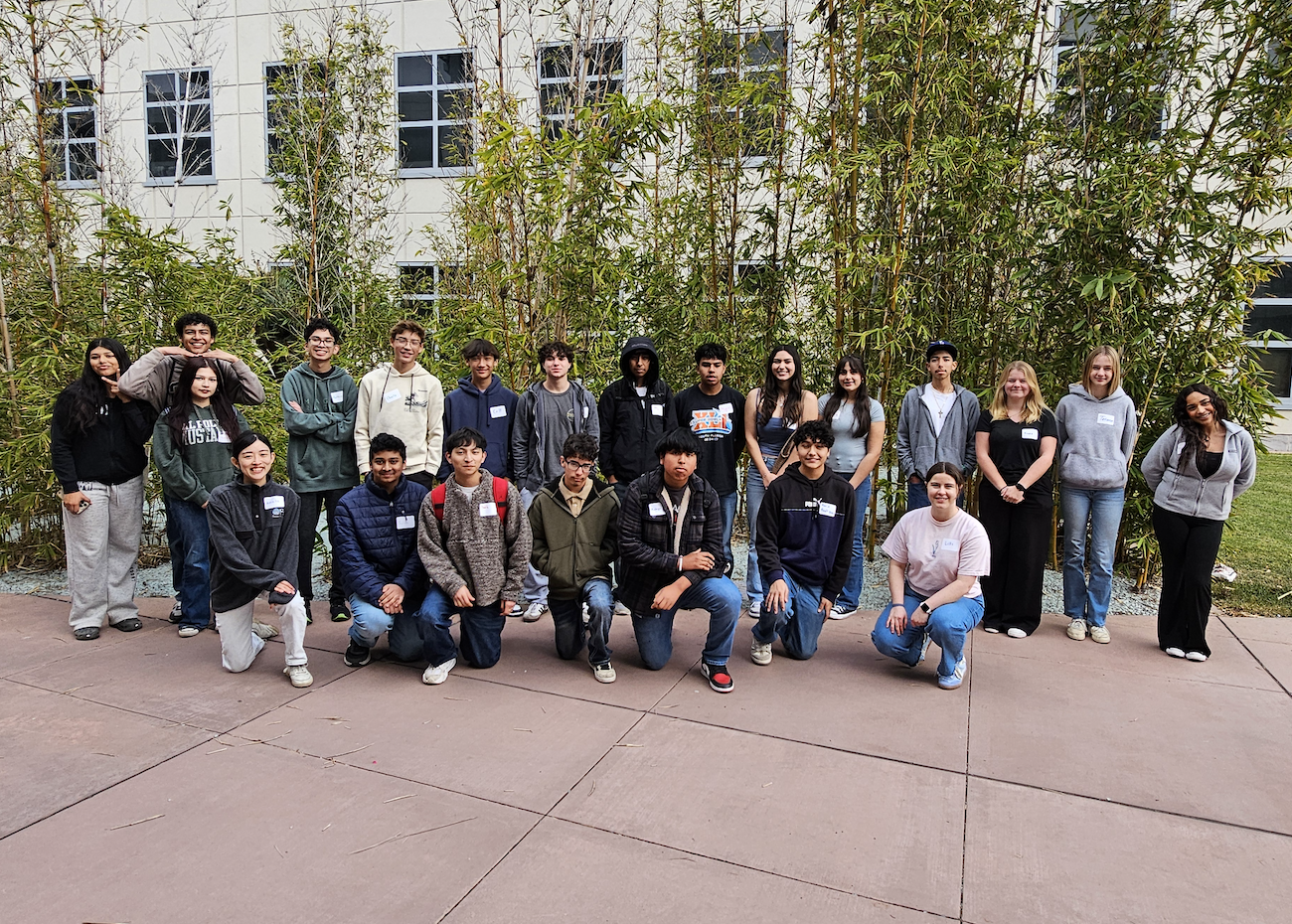
Winter 2025
The Quantum Around Us
You've probably heard all the buzzwords about quantum physics on the internet by now. The cat that is dead and isn't dead, spooky actions at a distance, quantum computers that solve problems quickly by trying all solutions simultaneously. While many of us have a vague idea about these phenomena, we need to delve a little deeper to truly appreciate the weirdness of the quantum world. In this short course, first, we will build up concepts such as superposition, polarization, diffraction, and measurements through hands-on physical experiments, interactive demonstrations, and web-based simulation tools. Next, we will use these concepts and see how they apply to real quantum experiments, and discuss the real mysteries and absurdities of the quantum world. (Keywords: Photonics, Materials, Physics, Electrical Engineering).
Taught by: Sahil Patel, Amalu Shimamura, Ph.D. students in Electrical & Computer Engineering and Sean Doan, Ph.D. student in Physics

Winter 2024
Quantum Mechanics Demystified: Exploring the role of quantum science
in modern technology
Have you ever wondered about the true meaning behind the word “quantum” that’s so casually used in superhero movies and trendy product names? What is it really like to do research in the field of quantum science? In this course, we’ll unravel the mysteries behind key concepts in quantum mechanics and hear the fascinating stories of how these ideas were discovered. Next, we'll bridge the gap between theory and reality by exploring the applications of quantum principles in cutting-edge technology. Get ready for an interactive journey where we’ll develop an understanding of the experiments that sparked the quantum revolution, and actually see the equipment and labs where quantum research comes to life. Whether you're passionate about materials science, engineering, chemistry, mathematics, or programming – there's a place for you in the captivating realm of quantum science!
Taught by: Alex Hallett, Ph.D. student in Materials Science
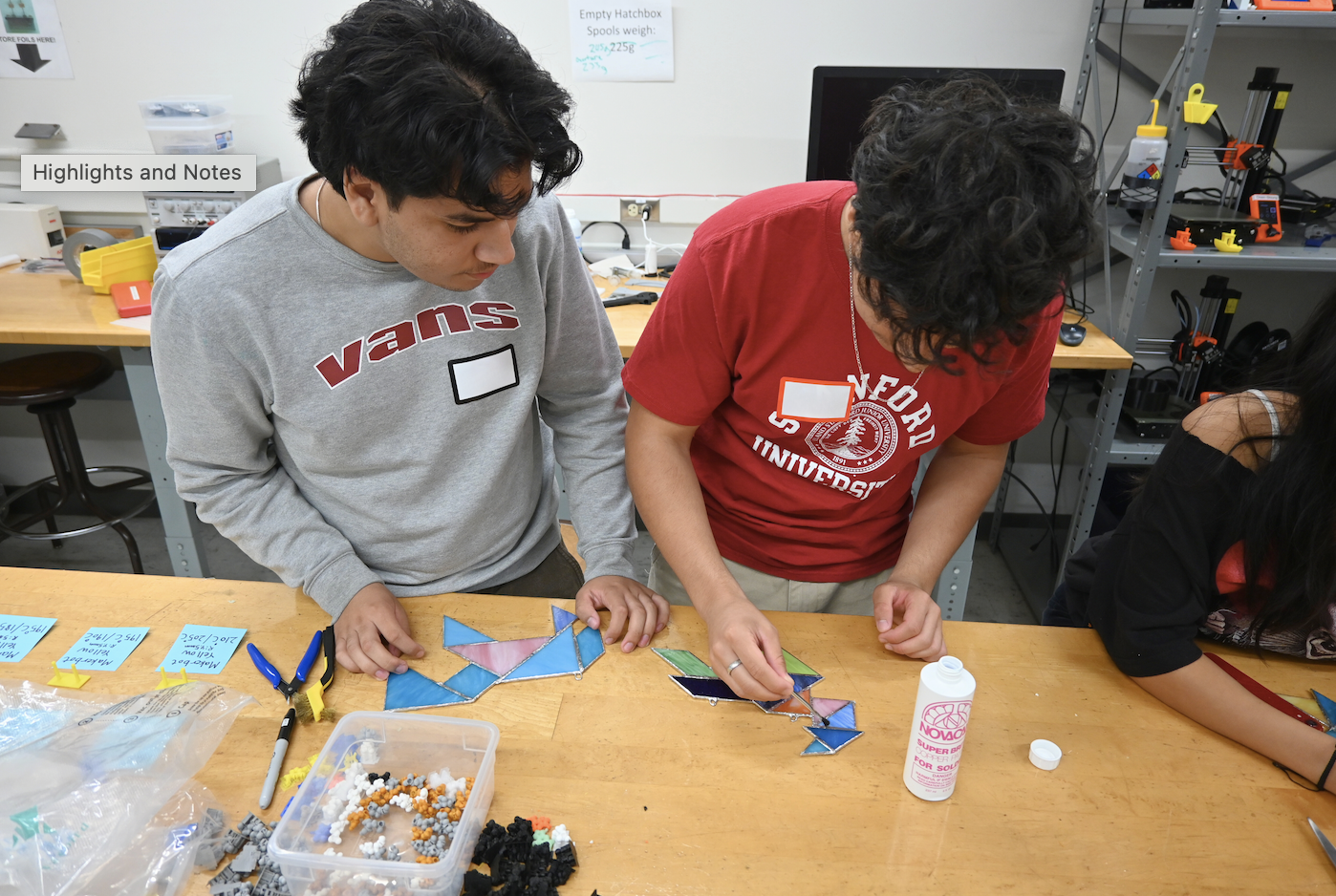
Fall 2023
The Art of Physics
What does an experimental physicist actually do? Sure, sometimes we stand and do problems on the chalkboard, but so much of experimental physics research is driven by creative thinking, problem solving, and making things with our hands. In this course we'll explore some of the most common fundamental physics research tools like lasers, magnets, detectors, and how these technologies are harnessed in building things to answer deep questions about the universe. We'll get a taste of how physics experimentalists tackle physics problems, and discover how exercising our creative skills helps us do interesting science. This course will be about physics, but it will also be about art, creative expression, and expanding our physics explorations beyond just calculations and math. We'll spend half of each day learning about modern and relevant topics in experimental quantum and particle physics, and the other half learning how to solder by making our own stained glass art pieces.
Taught by: Madeleine Bow Jun Leibovitch, Ph.D. student in Physics
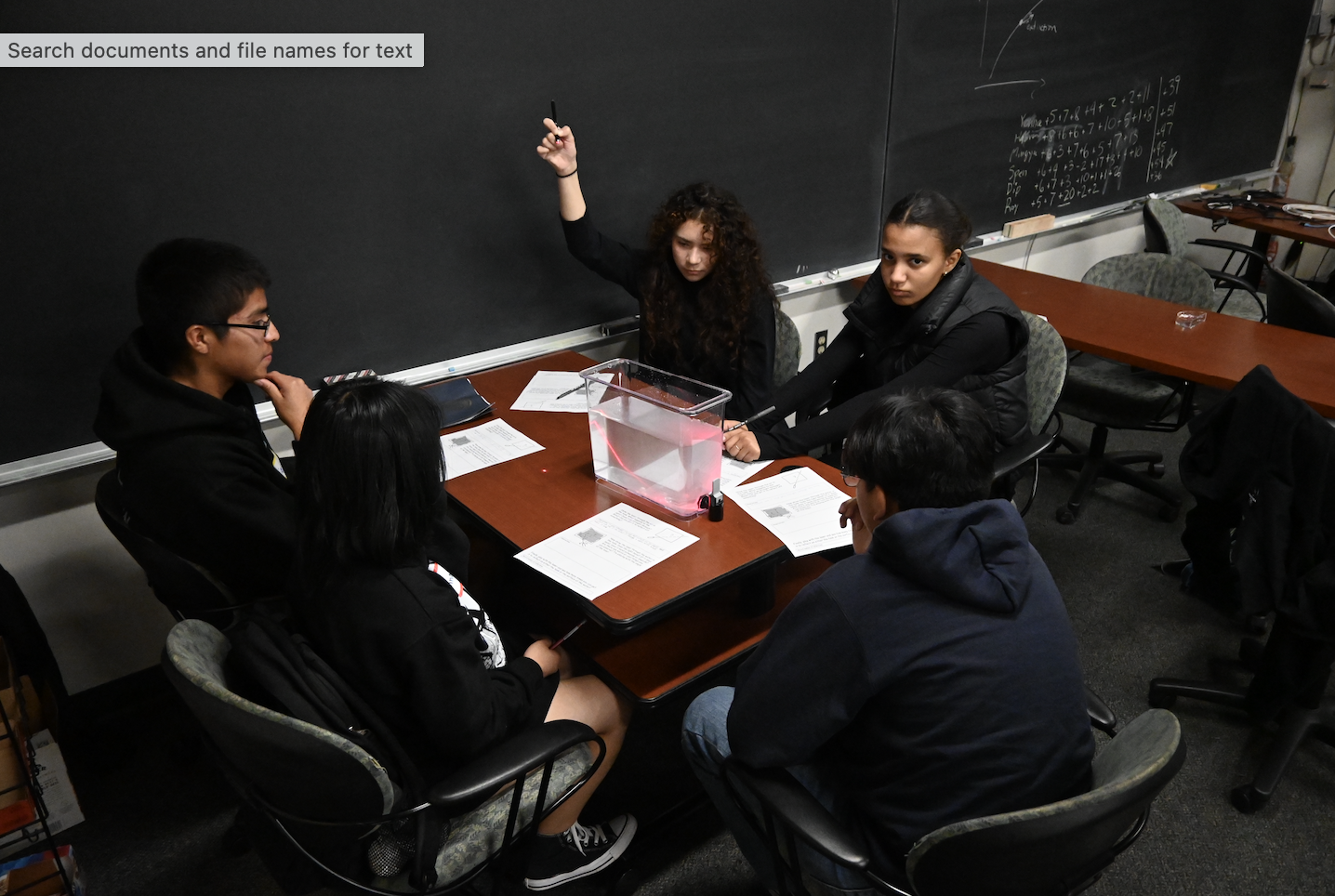
Winter 2023
Optics, Lasers, and Quantum Physics
When people talk about optics, maybe you think about glasses and lenses, or maybe even about cameras and corneas! But did you know that physicists use a variety of optical techniques to explore critical scientific questions in quantum physics? In this course we will dive into the fundamentals of optics, lasers and their use in studying the quantum nature of our world. We will learn the fundamentals of how lasers work, conduct our own experiment using light from lasers to image microscopic objects, and explore beautiful and interesting properties of light as a scientific tool. This course will involve hands-on projects using laser imaging, lectures on fundamental physics topics, and lab tours in UCSB’s physics department.
Taught by: Madeleine Leibovitch, Jared Pagett, and Sam Brantly, Ph.D. students in Physics, along with Simon Mitchell, a senior CCS student in Physics
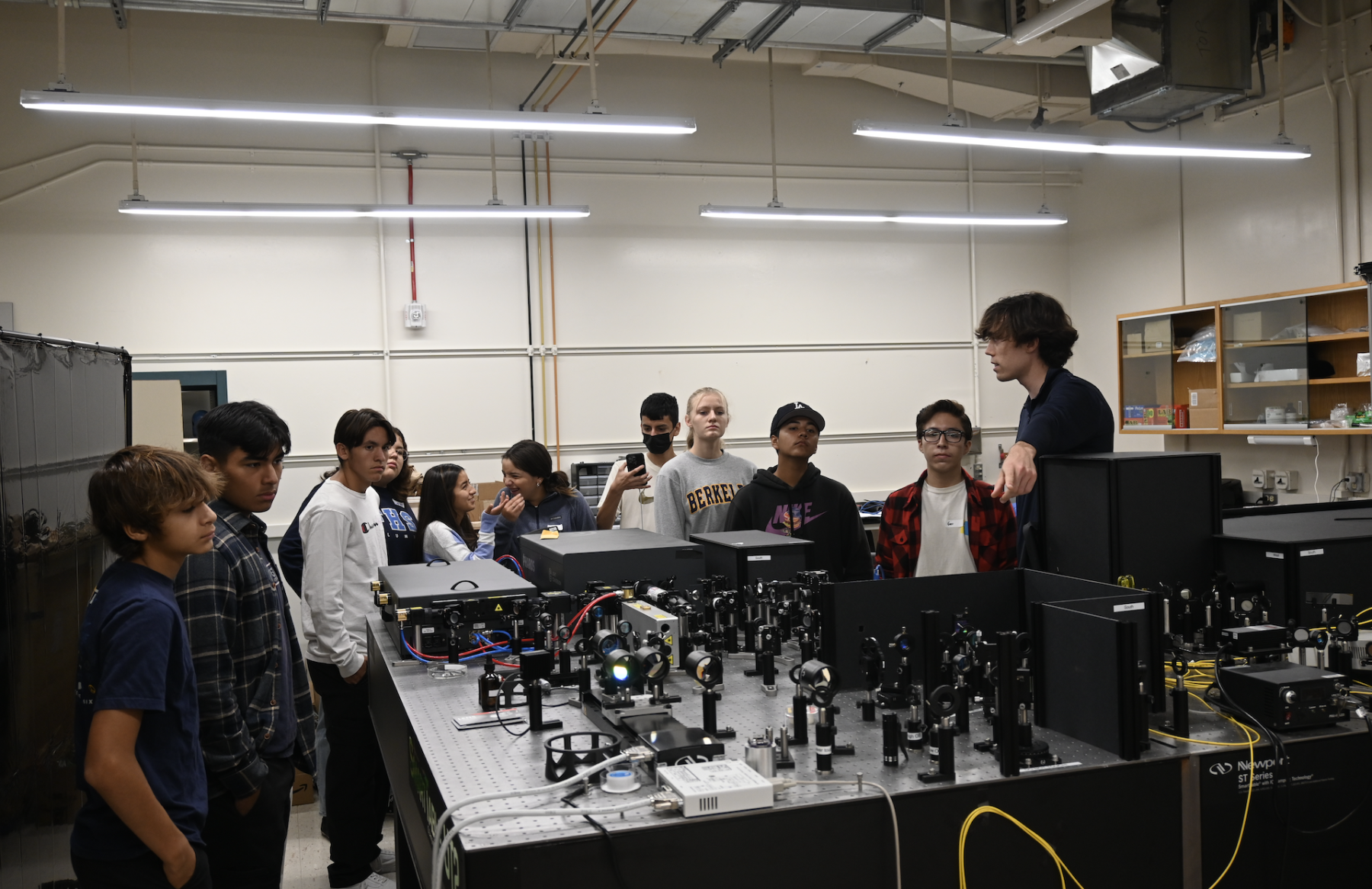
Fall 2022
Optics, Lasers, and Quantum Physics
When people talk about optics, maybe you think about glasses and lenses, or maybe even about cameras and corneas! But did you know that physicists use a variety of optical techniques to explore critical scientific questions in quantum physics? In this course we will dive into the fundamentals of optics, lasers and their use in studying the quantum nature of our world. We will learn the fundamentals of how lasers work, conduct our own experiment using light from lasers to image microscopic objects, and explore beautiful and interesting properties of light as a scientific tool. This course will involve hands-on projects using laser imaging, lectures on fundamental physics topics, and lab tours in UCSB’s physics department.
Taught by: Madeleine Leibovitch and Sam Brantly, Ph.D. students in Physics, along with Simon Mitchell, a senior CCS student in Physics
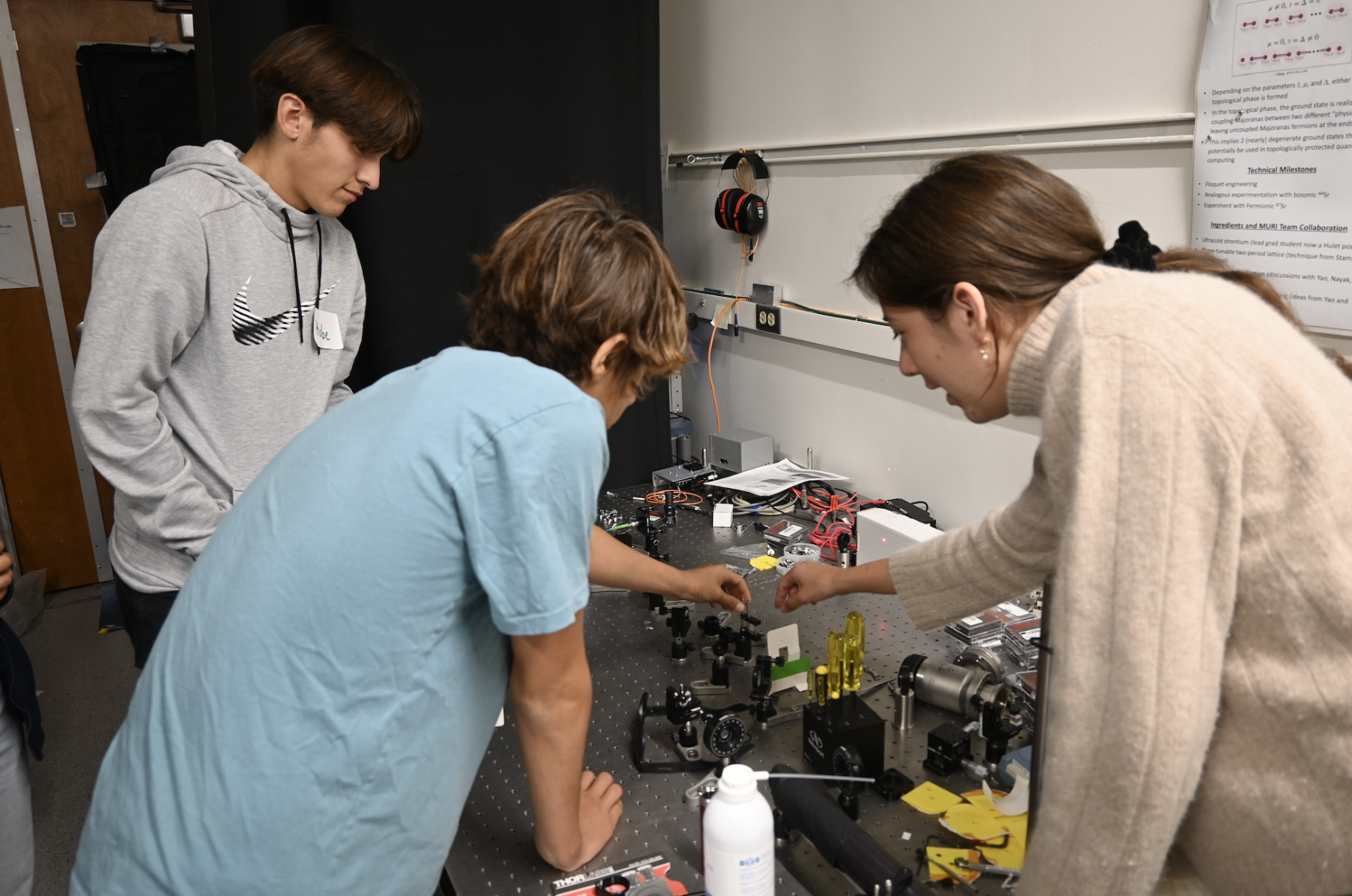
The Quantum Around Us
You've probably heard all the buzzwords about quantum physics on the internet by now. The cat that is dead and isn't dead, spooky actions at a distance, quantum computers that solve problems fast by trying all solutions all at once (I promise this is not how it works!). While many of us have a vague idea about these phenomena, to truly appreciate the weirdness of the quantum world, we need to delve a little deeper. In this course, first, we will build up the concepts such as superposition, polarization, diffraction, and measurements through hands-on physical experiments, interactive demonstration, and web-based simulation. Next, using these concepts, we approach an actual quantum experiment and discuss the real mysteries and absurdities of the quantum world. (Keywords: Photonics, Materials, Physics, Electrical engineering)
Taught by: Josh Castro and Kamyar Parto, Ph.D. students in Electrical and Computer Engineering
Winter 2022
The Quantum Around Us
You've probably heard all the buzzwords about quantum physics on the internet by now. The cat that is dead and isn't dead, spooky actions at a distance, quantum computers that solve problems fast by trying all solutions all at once (I promise this is not how it works!). While many of us have a vague idea about these phenomena, to truly appreciate the weirdness of the quantum world, we need to delve a little deeper. In this course, first, we will build up the concepts such as superposition, polarization, diffraction, and measurements through hands-on physical experiments, interactive demonstration, and web-based simulation. Next, using these concepts, we approach an actual quantum experiment and discuss the real mysteries and absurdities of the quantum world. (Keywords: Photonics, Materials, Physics, Electrical engineering)
Taught by: Dr. Shaimaa Azzam, Postdoctoral Researcher and Kamyar Parto, Ph.D. student in Electrical and Computer Engineering
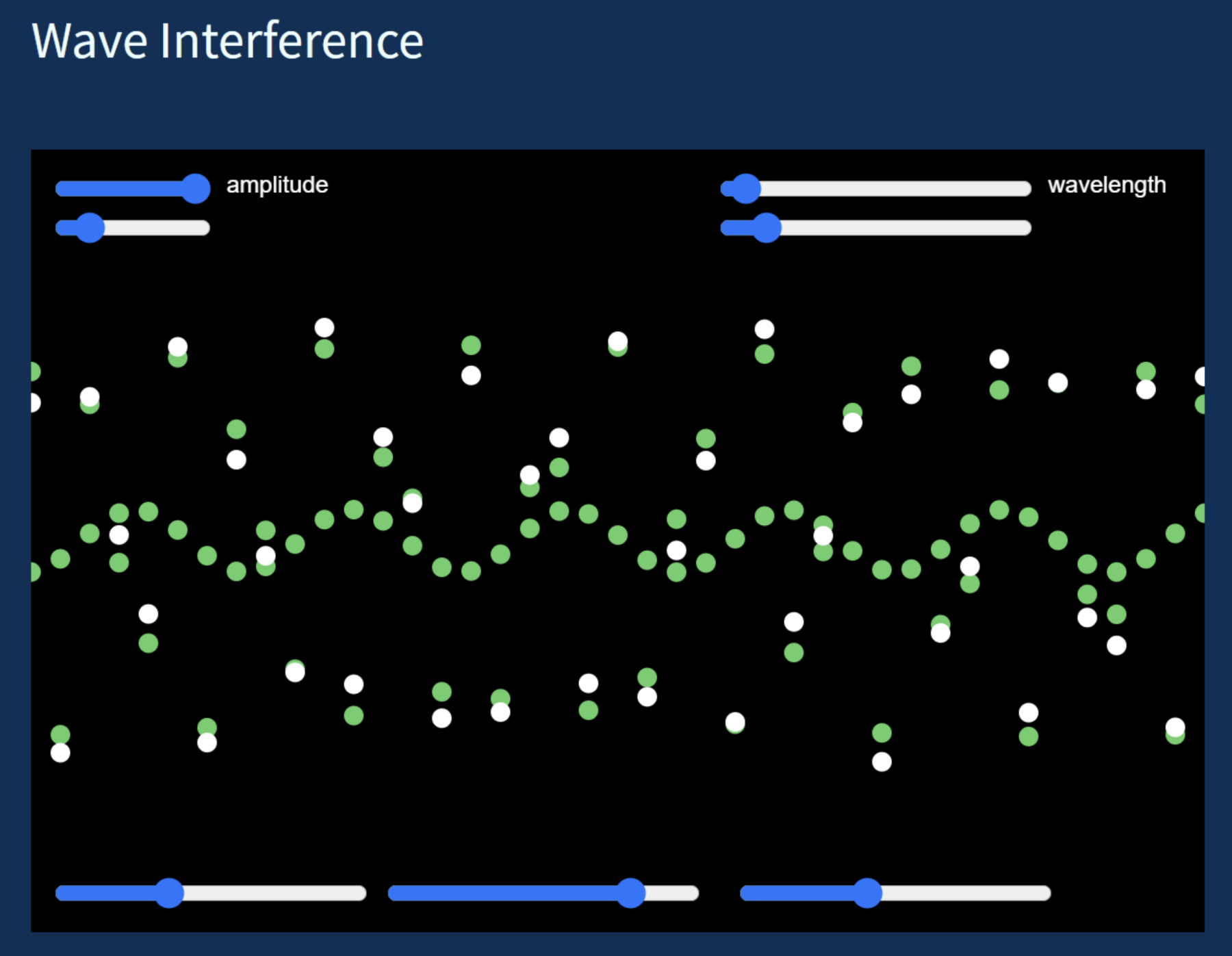
Winter 2021
The Art of Quantum Science
Technologies based on quantum mechanics are everywhere around us, from the computer chips and LEDs in your cell phones to lasers and GPS satellites we use for global communications and navigation. Quantum scientists are also now using the fascinating rules of quantum mechanics to observe, process, and communicate information in entirely new ways that will one day dramatically change how we interact with each other and our surroundings. In this course, we will explore the key concepts from quantum mechanics that are driving this quantum revolution through interactive demonstrations, immersive light, and sound visualization experiences, hands-on design activities, and group games. Students will learn what it means to be a Quantum Mechanic, building intuition about core principles including Schrödinger’s Cat, bits vs. qubits, entanglement, and wave-particle duality. (Keywords: Quantum Mechanics, Quantum Information Science, Quantum Foundry, Physics, Engineering) UCSB NSF Quantum Foundry through Q-AMASE-i program award number DMR-1906325
Taught by: Taught by: Trevor Steiner, a Ph.D. student in Electrical and Computer Engineering and Yin Yu, a Ph.D. student in Media Arts and Technology
Resources created for the course: Art of Quantum Science
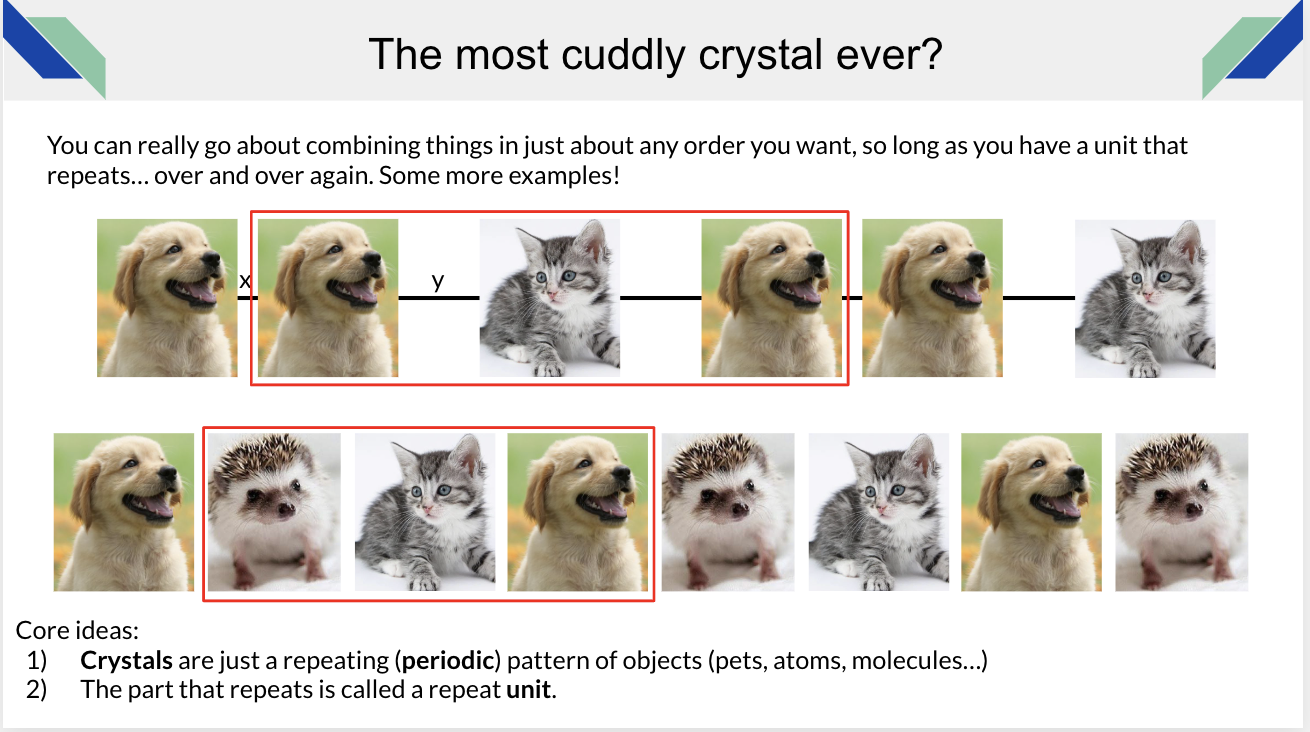
Fall 2020
A World of Crystals: How Nature Creates Order from Chaos
When we think of crystals, the thought of a glimmering jewelry display might pop into mind. But a staggering amount of our technology is built on crystals; processors, building materials, lighting, electricity generation... The list is endless. You are surrounded by crystals, in fact, you're probably using a whole array of them to read this. Atom by atom, we can manufacture crystals that nature only dreams of (and now you can too). In this class, we'll explore the physics and chemistry of crystals, learning concepts such as symmetry, diffraction, and diffusion. We will explore how researchers grow materials with applications stretching from medicine, quantum computing, magnetism, and more. We will have a combination of computer exercises, socially-distanced crystal growth (DIY!), and in-class puzzles to help explore the world of crystallography and crystal growth. (Keywords: Chemistry, Materials Science, Quantum Foundry) UCSB NSF Quantum Foundry through Q-AMASE-i program award number DMR-1906325
Taught by: Dr. Brenden Ortiz, Postdoctoral Researcher and Elings Prize Fellow

Winter 2019
Engineering Materials: From Magnets to Chocolate
Engineered materials are everywhere around us, from the metals and concrete that support buildings to the electronics in our phones. Materials scientists and engineers use chemistry, physics, and biology to understand useful materials, from the atomic level to the properties we see, and everything in between. In this course, we will learn how materials scientists manipulate materials at every length scale to make better structural, biological, and electronic, and magnetic materials. In particular, we will focus on research happening at UCSB, from bio-inspired materials design to quantum materials research at the new Quantum Foundry. At the end of this course, we will apply materials design concepts to real-world engineering problems. (Keywords: Materials Science, Quantum Foundry) UCSB NSF Quantum Foundry through Q-AMASE-i program award number DMR-1906325
Taught by Marcela Areyano, a Ph.D. student in Mechanical Engineering, and Julia Zuo Ph.D. student in Materials
Supported by: NSF Quantum Foundry through Q-AMASE-i program # DMR-1906325